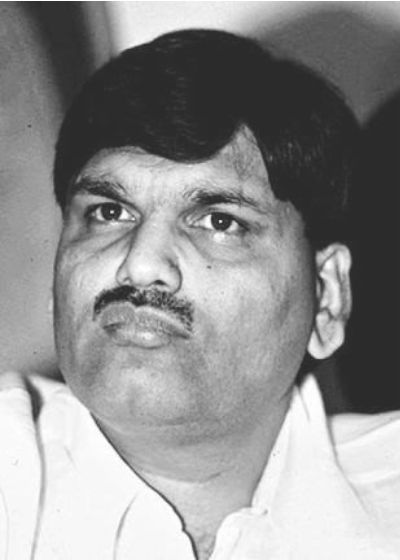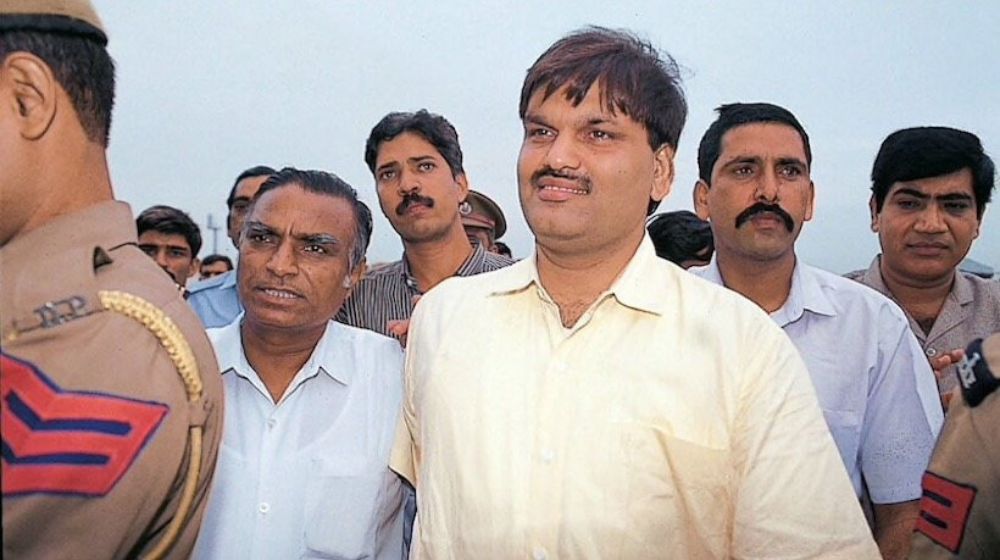| Name | Harshad Mehta |
| Born | 1954 |
| Death | 2001 (at the age of 47) |
| Wife | Jyoti Mehta |
| Children’s | Aatur Mehta |
| Parents | Father: Shantilal Mehta, Mother: Rasilaben Mehta |
| Brother | Ashwin Mehta |
| Cause of Death | Heart attack |
Harshad Shantilal Mehta was an Indian stockbroker. Mehta’s involvement in the 1992 Indian securities scam made him infamous as a market manipulator.
Harshad Mehta’s Early life

Harshad Mehta was brought into the world on 29 July 1954, at Panel Moti, Rajkot region, in a Gujarati Jain family. His youth was spent in Borivali, where his dad was a modest material businessman. Of the 27 lawbreaker allegations brought against Mehta, he was just sentenced for four, preceding his demise at age 47 in 2001. It was affirmed that Mehta was occupied with a monstrous stock control plot financed by useless bank receipts, which his firm handled for “prepared forward” exchanges between banks.
Mehta was indicted by the Bombay High Court and the Supreme Court of India as far as it matters for him in a monetary embarrassment estimated at ₹100 billion which occurred on the Bombay Stock Exchange (BSE). The outrage uncovered the provisions in the Indian financial framework and the Bombay Stock Exchange (BSE) exchange framework, and thus the SEBI introduced new guidelines to cover those escape clauses. He was being investigated for quite a long time until he kicked the bucket toward the finish of 2001.
Harshad Mehta’s Training and Education
He did his initial concentration in Janta Public School, Camp 2 Bhilai. A cricket devotee, Mehta didn’t show any exceptional guarantee in school and came to Mumbai after his tutoring for review and to find work. Mehta finished his B.Com in 1976 from Lala Lajpatrai College, Bombay, and worked various random temp jobs for the following eight years.
Harshad Mehta’s Work and life
Occupations are frequently connected with deals, including selling hosiery, concrete, and arranging jewels. Mehta began his vocation as a sales rep in the Mumbai office of New India Assurance Company Limited (NIACL). During this time, he got intrigued by the securities exchange and following a couple of days, surrendered and joined a financier firm. In the mid-1980s, he moved to a lower level administrative occupation at the financier firm Harjivandas Nemidas Securities where he worked as a middleman for the dealer Prasann Pranjivandas Broker who he thought as his “Master”.
Over a time of a decade, starting in 1980, he served in places of expanding liability at a progression of financier firms. By 1990, he had ascended to a place of noticeable quality in the Indian protection industry, with the media (counting famous magazines like Business Today) promoting him as “Amitabh Bachchan of the Stock market”.
Develop More Research and Asset Management, with the monetary help of partners, when the BSE sold a merchant’s card. He effectively began to exchange in 1986. By mid-1990, various prominent individuals started to put resources into his firm, and use his administration. It was as of now that he started exchanging vigorously in the portions of Associated Cement Company (ACC). During this period, particularly in 1990-1991, the media depicted an elevated revered picture of Mehta, referring to him as “The Big Bull”. He was canvassed in a cover page article of various distributions including the famous financial magazine Business Today, in an article named “Seething Bull”. In criminal arraignments later brought by the specialists, it was asserted that Mehta and his partners then, at that point, attempted a lot more extensive plan, which brought about controlling the ascent in the Bombay Stock Exchange. Continuously 50% of 1991 Mehta had procured the epithet of the “Huge Bull” since he was said to have begun the bull run in the stock market. Some individuals who worked in his firm included Ketan Parekh, who later would be engaged in his own imitate scam.
Foundation of the 1992 security misrepresentation
Stamp paper misrepresentation
Up to the mid-’90s banks in India were not permitted to put resources into the value markets. In any case, they were relied upon to present benefits and on hold, a specific proportion (edge) of their resources in government fixed interest bonds. Mehta shrewdly extracted capital from the financial framework to address this prerequisite of banks and siphoned this cash into the offer market. He additionally guaranteed the banks higher paces of revenue, while requesting that they move the cash into his record, dishonestly. Around then, a bank needed to go through a merchant to purchase protections and forward bonds from different banks. Mehta utilized this cash briefly in his record to purchase shares, subsequently climbing up the request of specific portions (of well-settled organizations like ACC, Sterlite Industries, and Videocon) drastically, auctioning them off, giving a piece of the returns to the bank, and saved the rest for himself. This brought about stocks like ACC (which was exchanging 1991 for ₹200/share) soaring to almost ₹9,000 in only 3 months.
Bank receipt extortion
One more instrument utilized incredibly was the bank receipt. In a prepared forward bargain, protections were not moved to and fro in fact.
All things being equal, the borrower, for example, the merchant of protections, gave the purchaser of the protections a BR. The BR fills in as a receipt from the selling bank and guarantees that the purchaser will get the protections they have paid for toward the finish of the terms. Having sorted this out, Mehta required banks, which could give counterfeit BRs, or BRs not supported by any administration protections.
When these phony BRs were given, they were given to different banks and the banks thus gave cash to Mehta, doubtlessly accepting that they were loaning against government protections when this was not exactly the case. He took the cost of ACC from ₹200 to ₹9,000 (an increment of 4,400%). Since he needed to book benefits eventually, the day he sold was the day when the business sectors crashed.
A flare-up of 1992 protections misrepresentation
The business sectors of the time, for example, telecommunications, electrical, and paper businesses gave genuine BRs. A few of these were utilized by Mehta to fasten loans from banks in his business advances and divert these into the offer market. As a result, he acted as an intermediary between banks and correct private organizations for the accrual of the benefits which would be offered on different terms by the bank (for example branch branches bank). These benefits were once given from a merchant’s card or through BRs that were given by banks as they were not settlement securities.




